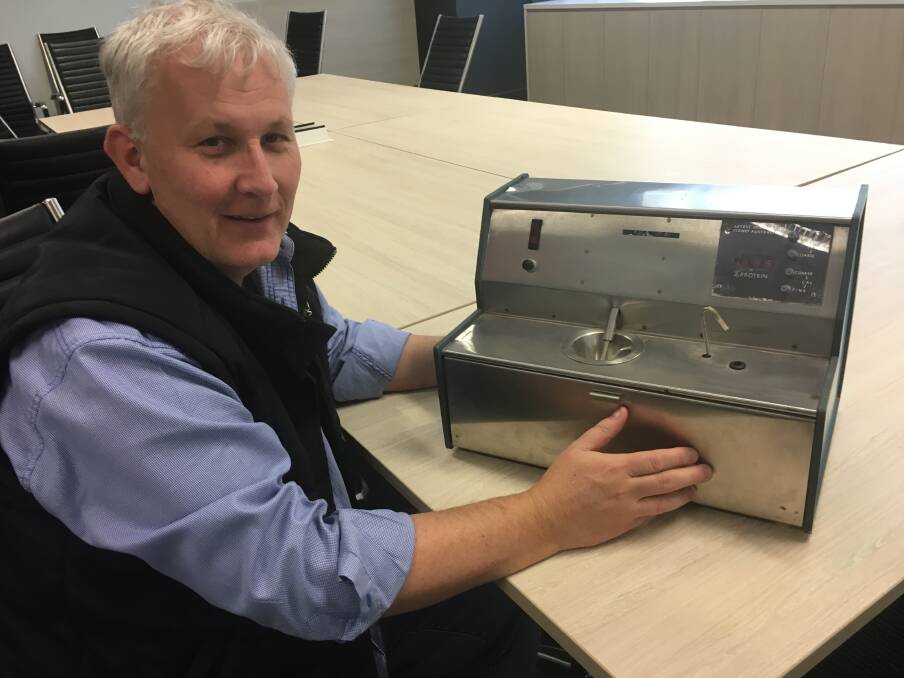
A farmer and a good bread baker have this in common: if they chew a handful of wheat grains they can usually tell whether the variety contains a high level of protein or not.
Subscribe now for unlimited access.
or signup to continue reading
“If you try the experiment yourself you will find that your saliva will wash away the starch from the chewed grains and you will be left with a glob of gluten, like chewing gum, in your mouth,” said Dr Michael Southan, CEO of GrainGrowers, the national representative body for grain farmers.
“For a bread baker, a high amount of gluten (protein) in wheat has nothing to do with superior nutritional qualities but is instead good for producing a quality loaf of bread - because it will assist the bread to rise properly. This helps a sale because a consumer (assuming they are not gluten intolerant) will often find a well risen loaf of bread more attractive to buy in a bakery than its flatter neighbours.”
At least, Dr Southan said, that was certainly the case back in the 1950s, when Australia was a white bread nation and ate around 64 kg per head per year. It was not until the 1960s and the rise of supermarkets that bread was flat topped, sliced and packaged, so at the time the white high-top loaf was king.
“However, the protein content of the grain supplied by farmers at the time in Australia – high or low – was ignored. Wheat was co-mingled (mixed together) and growers were paid for Fair Average Quality (FAQ) only. This was despite the fact that their domestic customers, the bakers, preferred high protein flour to make superior bread,” Dr Southan said.
READ MORE: Mailler calls out Joyce on wheat prices
“The situation changed when a test was developed which could measure the protein in wheat in the laboratory. Grain farmers in north western New South Wales who were growing high protein wheat varieties heard about it and were quick to realise the advantages this technology could make to their businesses if they were able to supply what their customers wanted.
“They were very keen to introduce the new technology into the supply chain and receive a premium for higher quality wheat.
“But it was not until machines such as the one pictured were developed that it became possible for nitrogen measuring to be taken out of the lab and into multiple silo receival testing sites able to be operated in the middle of the rush of harvest.”
The machine (pictured) was owned by the Prime Wheatgrowers Association and is No. 41 of many machines they owned at the time.
Prime Wheatgrowers Association (first known as the Premium Wheatgrowers Association and established in 1958 in Narrabri) was set up to enable north western NSW growers to lobby the Australian Wheat Board to introduce segregation of wheat based on the protein levels. They set up their own laboratory to start testing wheat to determine grain protein levels.
READ MORE: Narrabri grain forum focuses on customer
“The protein measuring method using this machine was still quite slow and dangerous,” said Dr Southan.
“The sample was hydrolysed with boiling acid. It took a long time before the organic matter was separated from a sample and the inorganic material left behind. This included the nitrogen which correlated with the protein content,” he said.
“It was not until this wet chemistry technology was replaced by Near Infrared Reflectance (NIR) technology in the 1970s that the measurement process could be speeded up and made safe. However, the NIR is still calibrated against the original standard achieved through the wet chemistry method.”
Grain farmers today can do their own grain protein testing on farm using portable machines such as GrainVantage manufactured by Perten which uses NIR technology. This enables them to segregate their own wheat into various qualities for storage on farm and maximise returns by delivering what the market requires.
GrainGrowers, which is this year celebrating its foundation 60 years ago as the PWA, will continue to focus on the issue of grains quality in order to maximise grower profitability. The organisation is conducting a significant research project this year to look into whether wheat quality, following deregulation of the industry in 2008, is today effectively meeting customer requirements. Findings are expected to be launched at GrainGrowers’ 60th Anniversary dinner in Dubbo in October.

